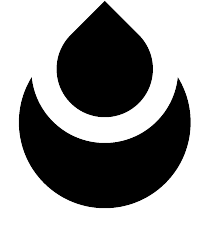
Physiotherapy is a cornerstone in the rehabilitation and management of various physical ailments and injuries, using a variety of techniques to restore and enhance movement and functionality. These techniques are designed to address specific conditions, improve mobility, and alleviate pain. In this blog, we will delve into the diverse range of physiotherapy techniques, exploring their applications and benefits.
Commonly Used Physiotherapy Techniques
Physiotherapy encompasses a wide range of techniques, each tailored to address specific needs and conditions. Here are some of the most prevalent methods used by physiotherapists:
- Manual Therapy: This involves hands-on manipulation of muscles and joints to reduce pain and improve range of motion. It can include techniques such as mobilization, manipulation, and soft tissue techniques.
- Exercise Therapy: Exercises are prescribed to improve strength, flexibility, and endurance. Exercise therapy can help in rehabilitation from injury, chronic conditions, and post-surgical recovery.
- Electrotherapy: This technique uses electrical energy to promote healing, reduce inflammation, and alleviate pain. Common modalities include TENS (Transcutaneous Electrical Nerve Stimulation) and ultrasound therapy.
- Heat Therapy: The use of heat can help relax muscles, reduce joint stiffness, and enhance blood flow to the affected area. Techniques include hot packs, paraffin wax treatments, and infrared heat.
- Cold Therapy: Also known as cryotherapy, cold therapy helps to reduce swelling and pain by numbing the area. It is often used immediately after an injury.
- Hydrotherapy: This technique uses water to relieve pain and promote physical rehabilitation. It can involve exercises performed in a pool or whirlpool baths.
These techniques are often combined to create a comprehensive treatment plan. By understanding their applications, people can better appreciate the multifaceted approach of physiotherapy.
How Manual Therapy Techniques Work in Physiotherapy
Manual therapy is a critical component of physiotherapy, involving skilled hand movements to assess and treat musculoskeletal pain and dysfunction. Here’s a closer look at how these techniques work:
- Joint Mobilization: This involves slow, passive movements of a skeletal joint to improve its range of motion and alleviate pain. It is particularly effective for stiff or painful joints.
- Manipulation: A more forceful technique that aims to restore joint function by applying a quick, controlled force to a joint. It is often accompanied by an audible ‘pop’ as the joint position is adjusted.
- Soft Tissue Mobilization: This technique targets the muscles and fascia to break down scar tissue, release tension, and improve movement. It can involve deep tissue massage and myofascial release.
- Trigger Point Therapy: Focuses on identifying and releasing painful areas of muscle tension known as trigger points. It involves applying pressure to these points to reduce pain and improve function.
- Manual Traction: Used to gently stretch the spine and relieve pressure on the vertebrae and discs. This can be particularly beneficial for conditions like herniated discs.
Manual therapy techniques are integral to physiotherapy as they provide immediate feedback and relief. These hands-on methods are often preferred by people for their personalized touch and effectiveness in addressing complex musculoskeletal issues.
The Role of Exercise Therapy in Physiotherapy
Exercise therapy plays a pivotal role in physiotherapy by promoting recovery, enhancing physical function, and preventing future injuries. It involves a structured program of physical activities that are specifically designed to meet the needs of the individual. Exercise therapy can vary from simple range-of-motion exercises to more complex strength training regimes. It is used to address various conditions such as back pain, arthritis, sports injuries, and post-surgical rehabilitation.
The exercises aim to improve muscle strength, endurance, flexibility, and balance. By regularly performing these exercises under the guidance of a physiotherapist, clients can achieve better posture, reduced pain, and improved overall function. Additionally, exercise therapy empowers people by giving them an active role in their recovery, promoting a sense of independence and well-being.
Physiotherapy Equipment: What to Know
Physiotherapy often incorporates various types of equipment to enhance treatment outcomes and facilitate rehabilitation. The following are some key pieces of equipment used in physiotherapy:
- Resistance Bands: These are versatile tools used to improve strength and flexibility. They can be adjusted for varying resistance levels to suit different stages of recovery.
- Treadmills: Used for cardiovascular and gait training, treadmills help improve endurance, walking patterns, and overall cardiovascular health.
- Balance Boards: These are used to improve balance, coordination, and core strength. They are particularly useful in rehabilitation following lower limb injuries.
- Therapeutic Balls: These are employed in core strengthening exercises and to improve balance and coordination. They are often used in conjunction with other exercises.
- Electrical Stimulation Devices: These devices use electrical currents to stimulate muscle contractions, which can help in muscle re-education and pain management.
- Ultrasound Machines: Used for deep tissue healing, these machines help reduce inflammation and promote tissue regeneration through sound waves.
The use of equipment in physiotherapy provides a structured way to progress through rehabilitation. By incorporating these tools, physiotherapists can tailor treatment plans to meet the specific needs and goals of each client.
Active vs. Passive Physiotherapy Techniques
Active and passive physiotherapy techniques are integral parts of a comprehensive rehabilitation program, each serving distinct purposes. Active techniques require the individual to engage in physical movements, such as exercises or stretches, to improve muscle strength, flexibility, and coordination. These techniques empower people by involving them directly in their recovery process and encouraging self-management of their condition. Examples include strength training, aerobic exercises, and range-of-motion activities.
In contrast, passive techniques do not require active participation from the client. Instead, the physiotherapist performs specific interventions on the client’s body to alleviate pain and improve mobility. These may include massage, manual therapy, heat or ice application, and ultrasound therapy. Passive techniques are particularly useful in the initial stages of recovery when pain and inflammation are more pronounced, and active participation might exacerbate symptoms. Understanding the balance between active and passive techniques allows for a more tailored and effective treatment plan, ensuring that people receive comprehensive care that addresses their specific needs and conditions.
How Does Hydrotherapy Fit Into Physiotherapy Treatment Plans?
Hydrotherapy, or aquatic therapy, is a versatile technique used in physiotherapy to leverage the properties of water for therapeutic benefits. Here’s how it fits into treatment plans:
- Buoyancy: Water supports body weight, reducing stress on joints and allowing for easier movement. This is particularly beneficial for people with arthritis or those recovering from surgery.
- Hydrostatic Pressure: Water exerts pressure on the body, which can help reduce swelling and improve circulation. This aids in the healing process and enhances mobility.
- Thermal Effects: Warm water helps relax muscles and improve blood flow, which can relieve pain and stiffness. This facilitates easier movement and stretching.
- Resistance: Water provides natural resistance, which is useful for strengthening exercises without the need for weights. It helps improve muscle tone and endurance.
- Safety and Comfort: The supportive nature of water allows clients to perform exercises they may not be able to do on land, reducing the risk of injury.
Hydrotherapy is a valuable component of physiotherapy, offering unique benefits that enhance conventional land-based therapies. Its ability to provide a controlled and supportive environment makes it an excellent choice for a wide range of conditions.
Taping and Bracing Techniques Used in Physiotherapy
Taping and bracing are supportive techniques used in physiotherapy to stabilize joints, protect injured areas, and facilitate the healing process. Taping involves applying adhesive strips to the skin to support and limit the movement of a joint or muscle, reducing strain and pain. It is often used in sports medicine to prevent injuries or manage existing conditions such as sprains or tendonitis. Kinesiology tape, a popular variant, is designed to mimic the skin’s elasticity, allowing for a full range of motion while providing support and promoting circulation.
Bracing involves the use of external devices to provide structural support to a joint or limb. Braces are commonly used post-injury or surgery to immobilize a joint, prevent further damage, and allow for healing. They can be custom-fitted and vary in rigidity depending on the level of support needed. Both taping and bracing are valuable tools in physiotherapy, offering people immediate relief and protection while enabling them to remain active and continue with their rehabilitation exercises.
Shockwave Therapy and Physiotherapy: What to Know
Shockwave therapy is an innovative treatment used in physiotherapy to address chronic pain and promote healing in musculoskeletal conditions. This section explores its applications and benefits:
- Mechanism: Shockwave therapy uses acoustic waves to stimulate the healing process in injured tissues. It promotes increased blood flow and reduces inflammation, accelerating recovery.
- Conditions Treated: It is often recommended for conditions such as plantar fasciitis, tennis elbow, calcific tendinitis, and chronic tendinopathy. These conditions typically involve persistent pain and inflammation.
- Non-Invasive: As a non-invasive treatment, shockwave therapy offers an alternative to surgery or medication. It requires minimal recovery time and has fewer associated risks.
- Pain Relief: People often experience a reduction in pain and improved function after a few sessions. The therapy helps break down calcium deposits and scar tissue, restoring normal function.
- Quick Sessions: Treatment sessions are relatively quick, typically lasting 15–20 minutes, making it a convenient option for busy clients.
Shockwave therapy is a powerful tool in the physiotherapist’s arsenal, offering effective relief for chronic conditions. By understanding its applications, clients can explore an alternative treatment option that complements their physiotherapy program.
Customizing Physiotherapy Techniques for the Individual
Physiotherapists employ a personalized approach to treatment, carefully tailoring techniques to address the unique needs of each person. Here’s how customization is achieved:
- Initial Assessment: A thorough evaluation of the individual’s medical history, current condition, and treatment goals is conducted to inform the development of a personalized plan.
- Individualized Exercises: Exercise programs are designed to target specific weaknesses or imbalances, ensuring that each client’s needs are addressed effectively.
- Progress Monitoring: Regular assessments are conducted to track progress and adjust treatment plans as needed. This ensures that therapies remain effective and aligned with the individual’s recovery goals.
- Individual Preferences: Clients’ preferences and lifestyles are taken into account when designing treatment plans. This increases adherence and satisfaction with the therapy.
- Multidisciplinary Approach: Collaboration with other healthcare professionals ensures that all aspects of a person’s condition are addressed, resulting in a comprehensive treatment plan.
Customization in physiotherapy allows for more effective and efficient treatment, improving outcomes and client satisfaction. By considering the individual needs and circumstances of each person, physiotherapists can deliver personalized care that facilitates optimal recovery.
Find the Treatment You’ve Been Looking For
Physiotherapy offers a diverse array of techniques that are instrumental in managing pain, improving mobility, and enhancing overall quality of life. By tailoring these techniques to individual needs, physiotherapists provide personalized care that fosters optimal recovery and empowers people.
If you’re seeking guidance, Art of Mobility in Mississauga is here to help. Our team is dedicated to delivering customized physiotherapy solutions to support your journey towards improved health and mobility. Contact us today to learn more about how we can assist you in achieving your rehabilitation goals.













